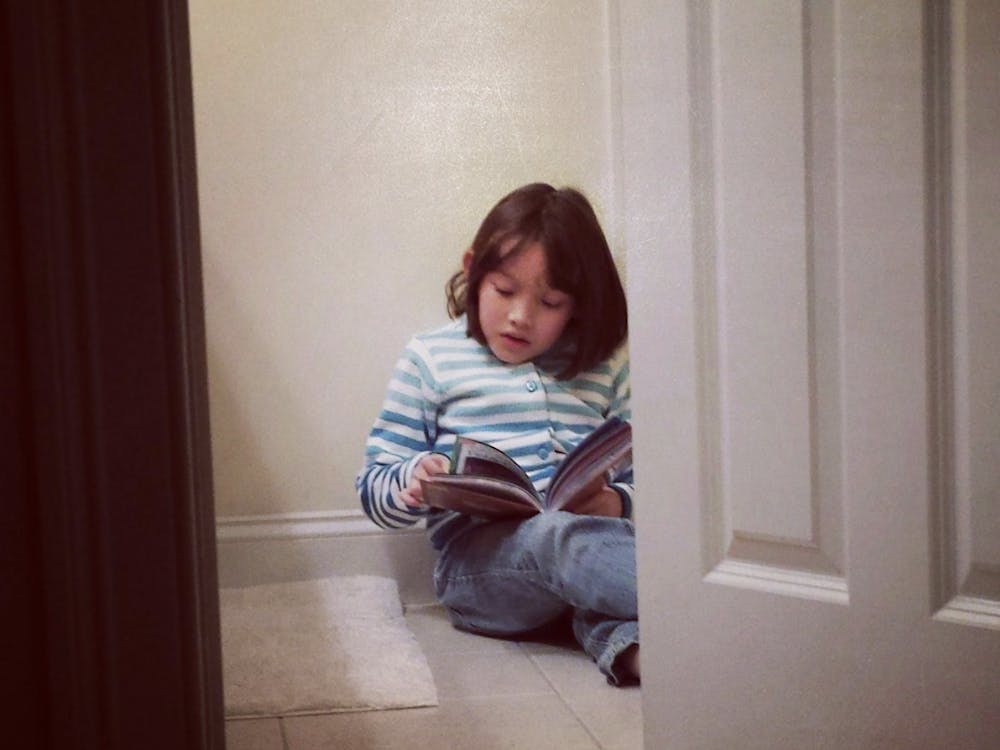Somewhere (2010), directed by Sofia Coppola, depicts the relationship between movie star Johnny Marco (Stephen Dorff) and his 11-year-old daughter Cleo (Elle Fanning). Marco, a middle-aged celebrity, has become accustomed to the lifestyle of the rich and famous. Personal strip teases, private pools and room service are all parts of his routine.
While Marco has become spiritless and fatigued by constant booze and effortless sexual escapades, he knows little else. When his daughter Cleo comes to stay with him over the summer for a few days, Marco is forced to confront aspects of his life he would not want his daughter exposed to. Meanwhile, Cleo is unaffected by fame. If anything, she is more mature than her father.
Cleo’s innocence and coincident maturity are touching: She cooks her father mac and cheese when he can barely raise his head from his pillow. Cleo’s mother calls Marco to tell him their daughter will need to stay with him for a longer period of time because she needs some time alone. Marco, although uncertain of what he should do with his daughter, agrees.
Somewhere is subtle and uncomplicated throughout. The camera forces viewers to watch scenes unfold that are neither plot-heavy nor immediately enticing. In the first few minutes of the film, a car circles around a race track. The camera remains set and does not follow the car, focusing instead on a sparse setting.
Coppola explained her decision to begin with this scene in an interview with Cinemablend.
“When I started the script, I thought about this character in a Ferrari, and I imagine those guys with these car collections can’t drive them in L.A., so they have to go to some track out in the middle of nowhere, so I was just imagining that,” she said. “Also, to have a visual metaphor so you know right away who the character is and what his state is and that he’s going in circles.”
Later scenes include Cleo and Johnny playing Guitar Hero, Johnny watching his daughter ice skate and Cleo and Johnny ordering room service. These moments are simple but illustrate how Johnny and his daughter are beginning to connect. While the film’s subject matter could justify a more emotionally dramatic and turbulent film, Somewhere grazes the surface of its characters’ psyches.
The characters’ faces illustrate their thoughts and allow the audience to make their own inferences as to what they may be thinking or saying if they had to. The dialogue is sparse. Characters speak only when they need to and often about topics that are commonplace. In this way the film is very realistic since human beings often do not need to share everything they think, often being unaware of their own feelings themselves. The most important interactions are often those which require no words.
Somewhere’s plot does not rise and fall dramatically — it simply is. This is not to say that the film is stagnant. Instead, it is atmospheric with long, lingering shots of aquamarine pools and long cement roads. Los Angeles is beautiful with its people and its scenery. But it is also lonely.
Strippers turn stony-faced once the dance is done, and Marco has no one to call when he needs human connection most. Somewhere’s soundtrack also contributes to the daydreamy ambiance of the film with songs like “I’ll Try Anything Once” by Julian Casablancas of The Strokes and Phoenix’s “Love Like a Sunset Part I.”
The slow pace of the film was deliberate. In an interview with filmschoolrejects, Coppola explains what she aimed for viewers to experience.
“I hope that you can feel his disconnect and be stuck with him,” she said. “It was a balance I found in the editing room. It was a hope that it’s not boring the audience while tearing into this guy’s private time and seeing the moments you normally don’t see of someone’s life.”
By the end of the film, the viewer realizes there was a cool poignancy throughout the film. The final scene in Somewhere is stark but emotional. The film leaves Marco and the viewers wondering what will come next for the characters. Has Marco decided to change his life, or is he himself still unaware of his own unhappiness? Viewers are left with the sense that something is going to change, but without any promise of how.
Coppola has directed many films including The Bling Ring, Lost in Translation, The Virgin Suicides and Marie Antoinette.




